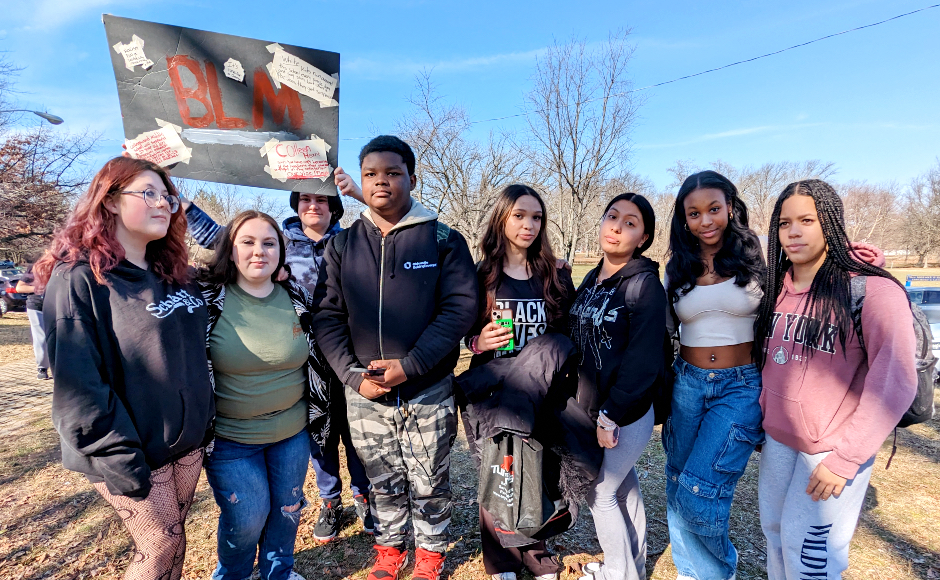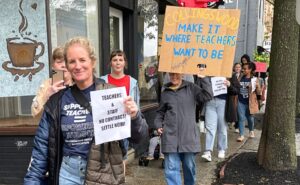 In 2023, Collingswood High School students protested what they described as a climate of racial bias in the district. Conditions haven't changed much in 2024, they say. Credit: Matt Skoufalos.
In 2023, Collingswood High School students protested what they described as a climate of racial bias in the district. Conditions haven't changed much in 2024, they say. Credit: Matt Skoufalos. In 2023, Collingswood High School students protested what they described as a climate of racial bias in the district. Conditions haven't changed much in 2024, they say. Credit: Matt Skoufalos.
In 2023, Collingswood High School students protested what they described as a climate of racial bias in the district. Conditions haven't changed much in 2024, they say. Credit: Matt Skoufalos.

